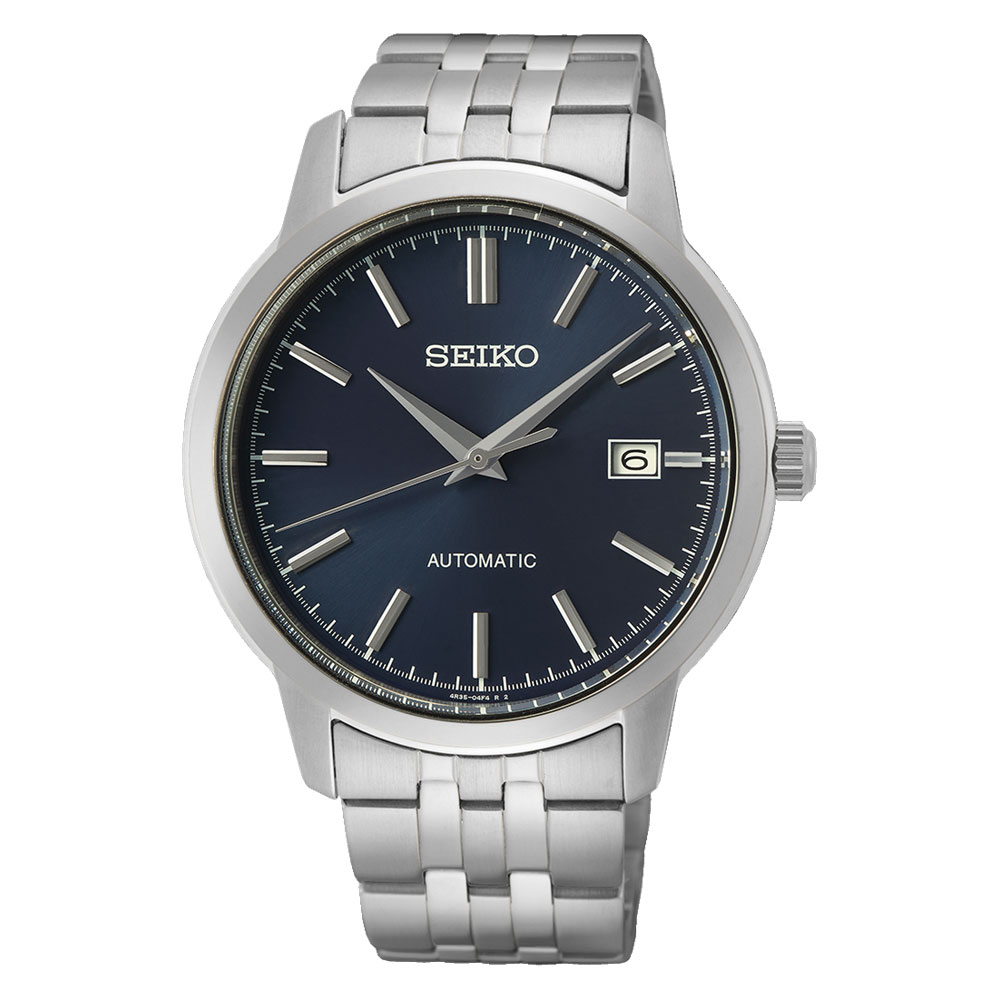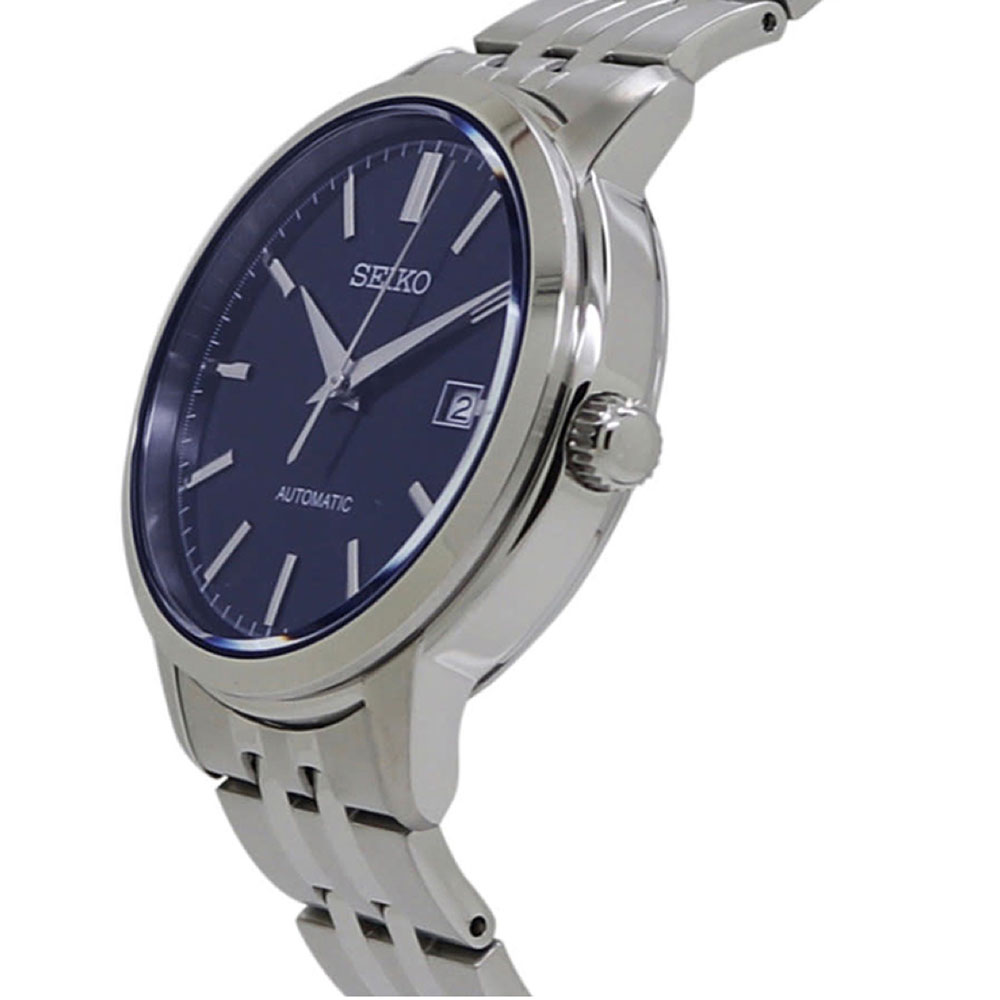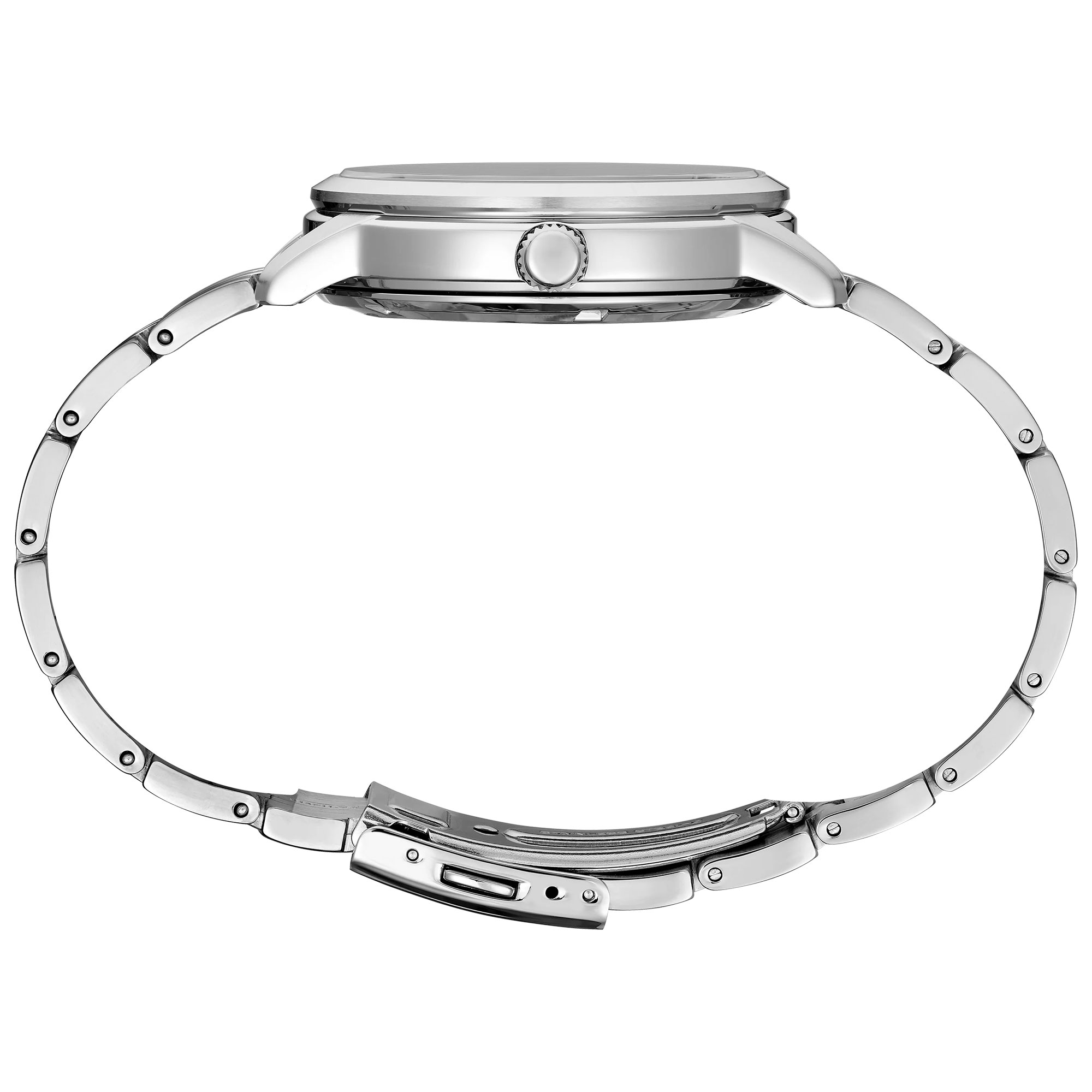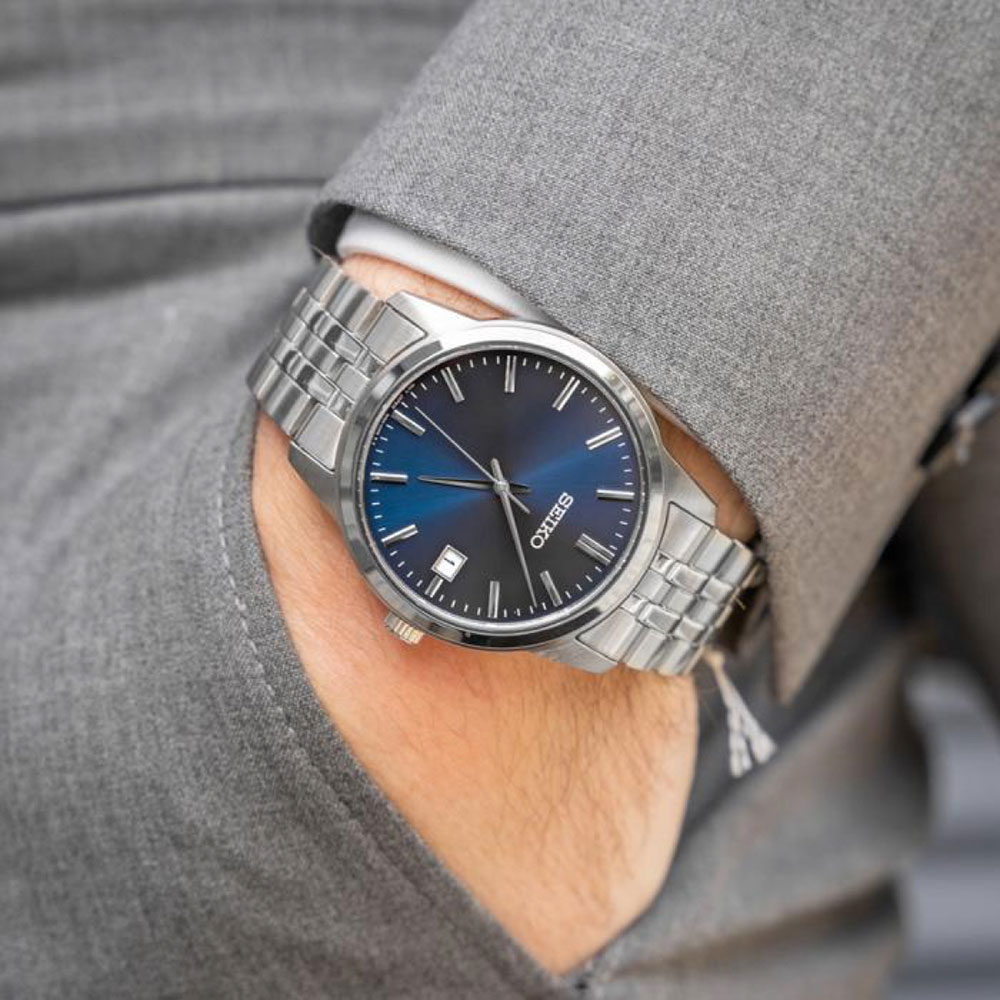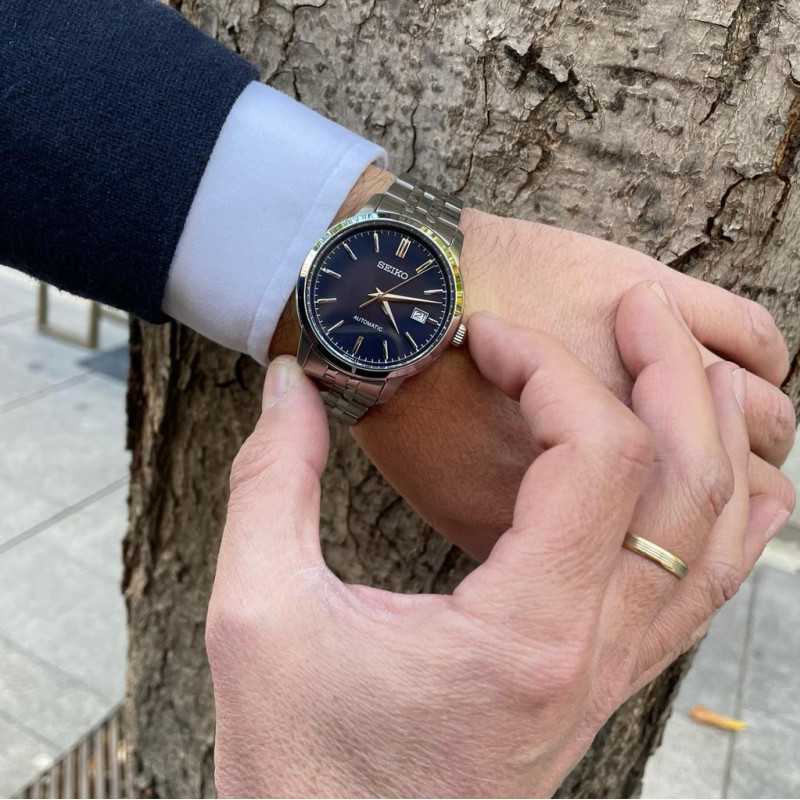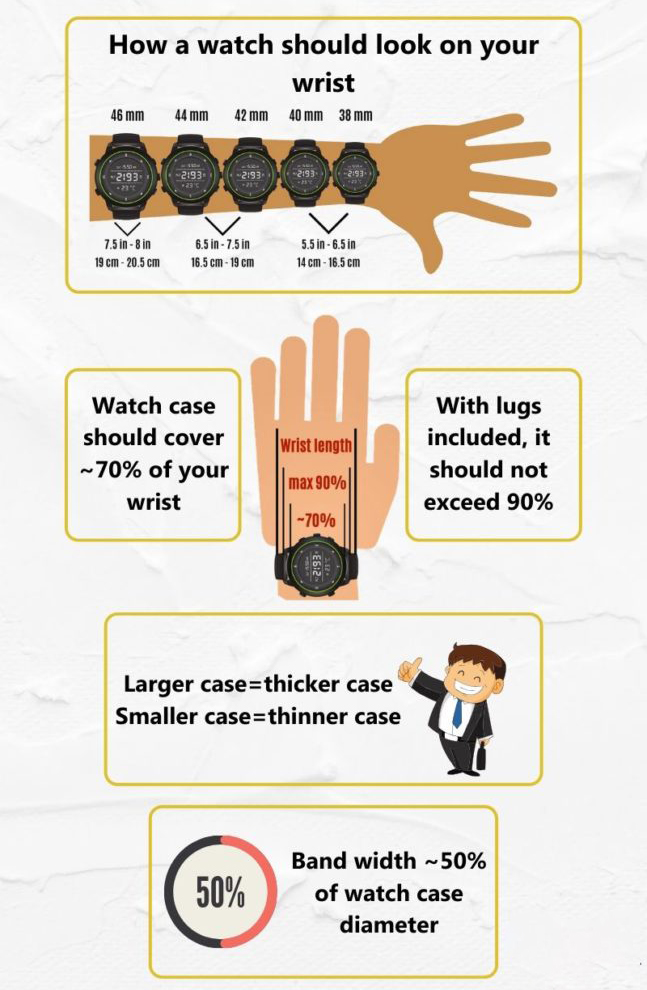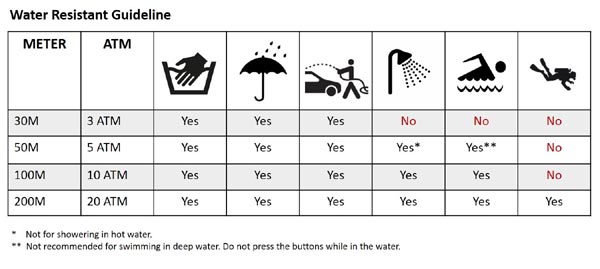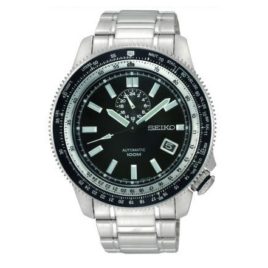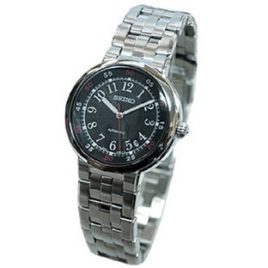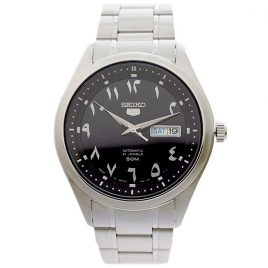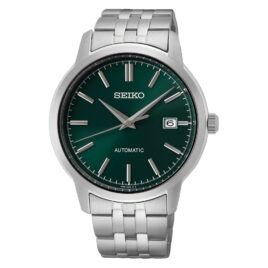Description
SEIKO Automatic SRPH87 Specifications
| Feature |
| ||
|---|---|---|---|
| Driving system | Automatic with manual hand winding mechanism | ||
| Caliber number | 4R35 | ||
| Case material | Stainless steel | ||
| Case back | See-through screw case back | ||
| Case shape | Round | ||
| Band type | Bracelet | ||
| Band material | Stainless steel | ||
| Band color | Silver tone | ||
| Band width | 20 mm | ||
| Clasp | Three fold with push button release | ||
| Dial color | Blue sunray | ||
| Glass material | Hardlex crystal | ||
| Hands | Silver tone hour, minute and second hand | ||
| Dial marker | Silver tone index | ||
| Second markers | Minutes marker around the outer rim | ||
| Bezel | Fixed silver tone stainless steel bezel | ||
| Calendar | Date display at 3 o’clock position | ||
| Function | Date, hour, minute, second, stop second hand | ||
| Drive duration | Power reserve approximately 41 hours | ||
| Accuracy | +45 to -38 seconds per day | ||
| Vibrations | 21,600 vibrations per hour (6 beats per second) | ||
| Water resistance | 10 bar water resistance (100 meters / 330 feet) | ||
| Size | Diameter 41.2 mm x Thickness 11.8 mm | ||
| Lug to lug | 48.5 mm | ||
| Weight | 130 g |
SEIKO Automatic SRPH87 Features
From the Essentials Collection. Adding classic automatic timekeeping to the Essentials Collection, this versatile timepiece winds with the movement of the wearer’s wrist, and never needs a battery. Visible through the screw down see-through case back, the 23-jewel movement beats at a frequency of 21,600 vibrations per hour, with a power reserve of approximately 41 hours and manual winding capability. With a sophisticated sunray finish, the blue dial includes a calendar and crisply defined hands and markers. Crafted of stainless steel, with tri-fold push button release clasp. 10 bar, 100M Water Resistant.
- 23 jewels
- Calendar date display
- Stainless steel case and bracelet
- See through and screw case back
- Fixed stainless steel bezel
- Hacking seconds hand function
SEIKO Automatic SRPH87 History
The company was founded in 1881, when Kintarō Hattori opened a watch and jewelry shop called “K. Hattori” (服部時計店 Hattori Tokeiten) in the Ginza area of Tokyo, Japan. Eleven years later, in 1892, he began to produce clocks under the name Seikosha (精工舎 Seikōsha), meaning roughly “House of Exquisite Workmanship”. According to Seiko’s official company history, titled “A Journey In Time: The Remarkable Story of Seiko” (2003), Seiko is a Japanese word meaning “exquisite” or “success” (“exquisite” is usually written 精巧 from Chinese jīngqiǎo, while the meaning “success” is usually written 成功 from Chinese chénggōng).
The first watches produced under the Seiko brand appeared in 1924. In 1969, Seiko introduced the Astron, the world’s first production quartz watch; when it was introduced, it cost the same as a medium-sized car. Seiko later went on to introduce the first quartz chronograph.
In the late 1980s, Seiko produced the first automatic quartz that combined the self-energizing attributes of an automatic watch with quartz accuracy. The watch is entirely powered by its movement in everyday wear. In 1991, to increase popularity, these watches were relaunched under the name Seiko Kinetic.
source : https://en.wikipedia.org/wiki/Seiko

